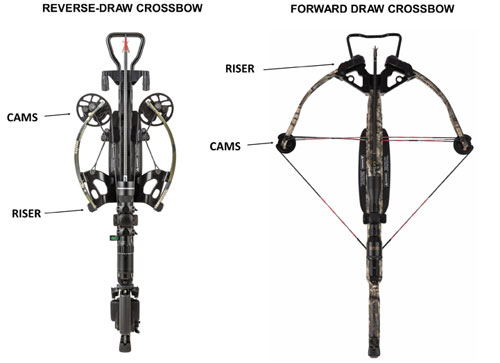Reverse-draw crossbows like the TenPoint Nitro XRT and the Wicked Ridge RDX 400 have seen a rise in popularity over the past few years. The reverse-draw design yields certain advantages over its traditional forward-draw counterpart when it comes to balance, performance and overall quietness. If you have never tried shooting a reverse-draw crossbow before, consider these five advantages when you’re in the market for a new crossbow.
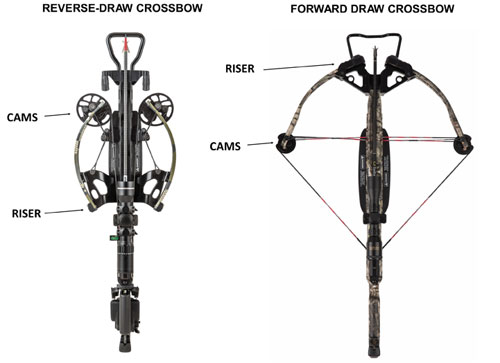
The bow assembly is mounted in the reverse direction on a reverse-draw crossbow. Photo credit Bryan Zabitski.
1. Superior Balance
By mounting the bow assembly to the stock backward, in the reverse direction, the aluminum riser and limb pockets are mounted midway down the stock instead of at the far front end of the flight rail. This moves the center of gravity of the crossbow closer to your body and places most of the crossbow’s weight behind the fore-grip support hand. This eliminates the nose-heavy feel that most forward-draw crossbows have. A reverse-draw crossbow can weigh just as much as a forward-draw crossbow, however, shifting the weight closer to your body makes the crossbow feel lighter and makes it the easiest of all types to shoot from an offhand position.
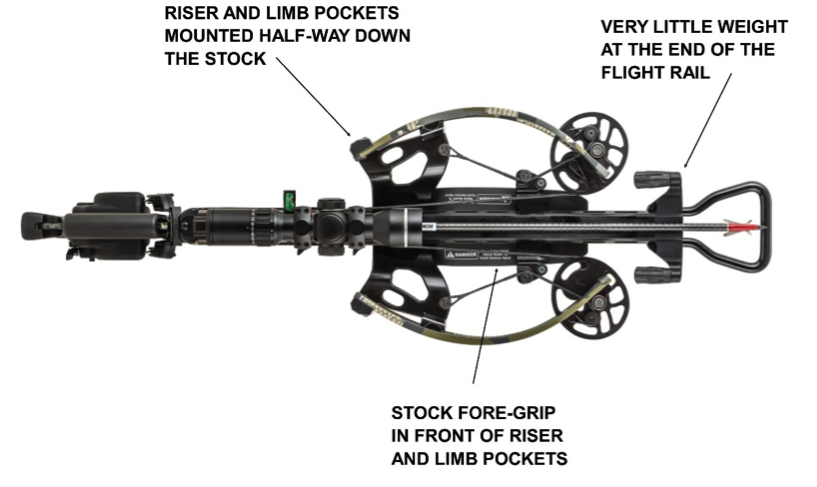
Reverse-draw crossbows eliminate the nose-heavy feel of some forward-draw crossbows. Photo credit Bryan Zabitski.
2. High Performance, Yet Ultra-Compact
By reversing the bow assembly and changing the riser mounting position, the string’s resting position is extended a few inches farther down the flight rail. This increases the distance that the string accelerates the crossbow arrow (also referred to as the power stroke) and results in faster arrow speed, when compared to an arrow shot from a forward-draw crossbow with the same rail length. Due to the increase in the power stroke on a reverse-draw crossbow, you do not have to make the flight rail and crossbow longer to shoot faster speeds.
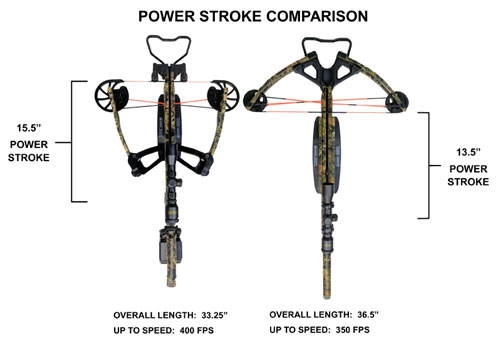
Reverse-draw crossbows are more compact and have a longer power stroke than their forward-draw counterparts. Photo credit Bryan Zabitski.
3. Pinpoint Accuracy
When you shoot a front-heavy forward-draw crossbow, your fore-grip hand must support the weight of the bow assembly sitting at the end of the flight rail. This causes some shooters to fight the tendency of the front end of the crossbow to want to move downward when shooting offhand. When your fore-grip hand does not have to fight this weight due to the difference in design of a reverse-draw crossbow, you are able to hold on your target more steadily, greatly reducing the size of the groups that you can shoot without a rest.
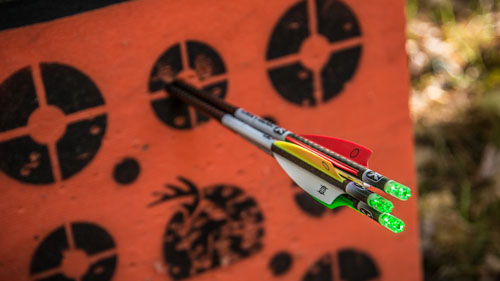
Due to the balance of a reverse-draw crossbow, shooting tighter groups offhand is much easier to accomplish. Photo credit Bryan Zabitski.
4. Whisper Quiet
Reverse-draw crossbows are more energy efficient than forward-draw crossbows. Since the power stroke of the reverse draw is longer than that of a forward draw, the string and cables can be mounted at a lower draw weight, but still accelerate the crossbow arrow to a higher speed than that of a forward-draw crossbow with the same draw weight and overall crossbow length. This means that after the arrow has left the flight rail, there is less energy left over to be dissipated by the crossbow parts, so there is less vibration after the shot. Less vibration translates into a quieter shot.
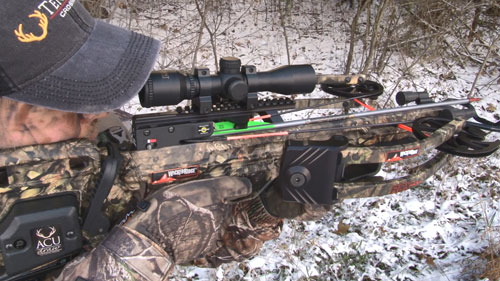
Reverse-draw crossbows shoot quietly, which makes them a very popular choice for deer hunters. Photo credit Bryan Zabitski.
5. Smoother Shooting
Since the string and cables on a reverse-draw crossbow are mounted at a lower draw weight, generating less vibration after the shot, the result is an extremely smooth-shooting crossbow. Less vibration means less “muzzle jump,” which allows you to more easily follow through the shot by keeping the crosshair on the target after the arrow has been launched. Additionally, the trigger mechanism holds less weight while the string is cocked, which yields a lighter and crisper trigger break. These advantages translate into a more desirable shooting experience overall.
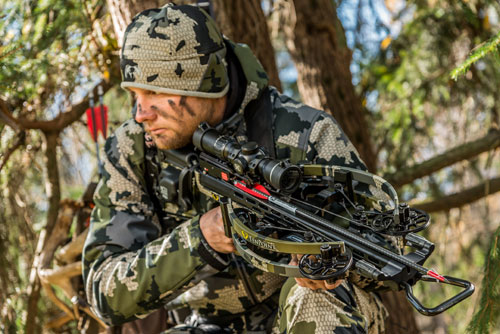
The Nitro XRT is TenPoint’s newest reverse-draw hunting crossbow. Photo courtesy TenPoint Crossbow Technologies.
_________________
 From creating more cover to adding the right forage with deer food plots, to getting whitetails to move to desired areas, veteran land manager and host of Grow ’em Big, Steve Bartylla, leaves no stone unturned when it comes to deer management and habitat improvement. These are topics certain to raise any hunter’s or property owner’s whitetail and habitat IQ, and are drawn from the expert land manager’s hands-on-experience. Perhaps best of all the concepts Bartylla covers in this vividly illustrated resource can be applied to any property size – from 10 to 1,000 acres. Features include:
From creating more cover to adding the right forage with deer food plots, to getting whitetails to move to desired areas, veteran land manager and host of Grow ’em Big, Steve Bartylla, leaves no stone unturned when it comes to deer management and habitat improvement. These are topics certain to raise any hunter’s or property owner’s whitetail and habitat IQ, and are drawn from the expert land manager’s hands-on-experience. Perhaps best of all the concepts Bartylla covers in this vividly illustrated resource can be applied to any property size – from 10 to 1,000 acres. Features include:
• Proven deer and habitat management tactics to attract mature bucks
• In-depth examination of white-tailed deer behavior
• Clear plans of action to initiate habitat- and deer-management strategies

